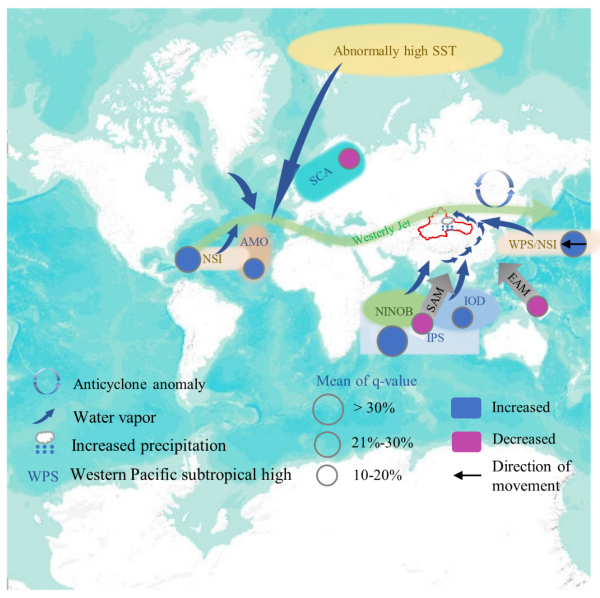2025-04-10 中国科学院(CAS)
<関連情報>
- https://english.cas.cn/newsroom/research_news/earth/202504/t20250411_1041028.shtml
- https://agupubs.onlinelibrary.wiley.com/doi/10.1029/2024JD042704
ベースライン期間の更新は中国における極端な気候変動の検出に影響する Updating the Baseline Period Affects the Detection of Extreme Climate Change in China
Lan Li, Tianjun Zhou, Wenxia Zhang
Journal of Geophysical Research: Atmospheres Published: 29 March 2025
DOI:https://doi.org/10.1029/2024JD042704

Abstract
Extreme climate events significantly impact ecosystems and society. The assessments of extreme events often rely on percentile-based indices using a 30-year baseline period. In China, the Blue Book on Climate Change has traditionally been based on the 1981–2010 baseline period, and it began to use the 1991–2020 baseline period since 2024. However, the impact of baseline changes on assessing extremes in China remains unclear. This study examines how baseline period updates influence the detection of long-term climate change in China, particularly in estimating the Time of Emergence (ToE) for climate change signals. The results show that for temperature extremes, updating the baseline period leads to more (10%∼38%) cold extremes identified by 10th percentile indices and fewer (−32%∼−11%) warm extremes identified by 90th percentile indices across China. It slows the increase in identified warm extremes and accelerates the decrease in cold extremes. It delays the ToE for warm events and advances the ToE for cold events. For precipitation extremes, the update leads to fewer (−12%∼−1%) but more intense (at most 4%) extreme precipitation events identified by 95th and 99th percentile indices across China with slower increases in frequency and faster rises in intensity. The baseline period update advances the ToE for extreme precipitation intensity and delays it for frequency. The update of the baseline significantly affects the assessment of changes in climate extremes in China due to the background warming and wetting in 1991–2020 compared to 1981–2010.
Key Points
- The update slows the rise in warm extremes and precipitation frequency but accelerates decline in cold extremes and precipitation intensity
- The update affects the detection of the Time of Emergence (ToE) in climate extremes identified across China
- The update delays the ToE for warm extremes and precipitation frequency but advances the ToE for cold events and precipitation intensity
Plain Language Summary
Extreme weather and climate events are often assessed using percentile-based indices dependent on a 30-year baseline climatology period. Each year, China Meteorology Administration releases the Blue Book on Climate Change to assess the ongoing climate change, including extreme events. Starting in 2024, the assessment in the Blue Book is based on a new baseline period 1991–2020, replacing the previous 1981–2010 baseline period. This study examines the impact of this baseline change on the evaluation of extreme temperature and precipitation events in Chinese mainland. We find that for extreme temperature, updating the baseline period from 1981–2010 to 1991–2020 leads to more frequent occurrences of cold extreme events identified by 10th percentile indices, and fewer warm extreme events identified by 90th percentile indices across China. It slows the increase in extreme warm events and accelerates the decrease in extreme cold events. Notably, the time of emergence (ToE) of climate change signals is delayed for warm events but advanced for cold events. For precipitation, fewer but more intense extreme events (identified by 95th and 99th percentiles) are observed, with slower increase in frequency and faster rise in intensity. The new baseline advances the ToE for extreme precipitation intensity but delays it for frequency.



